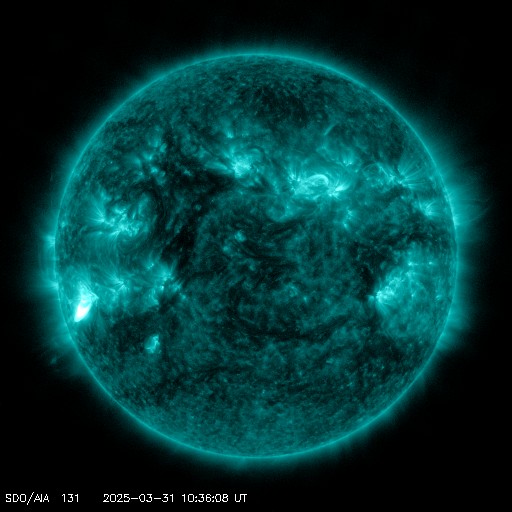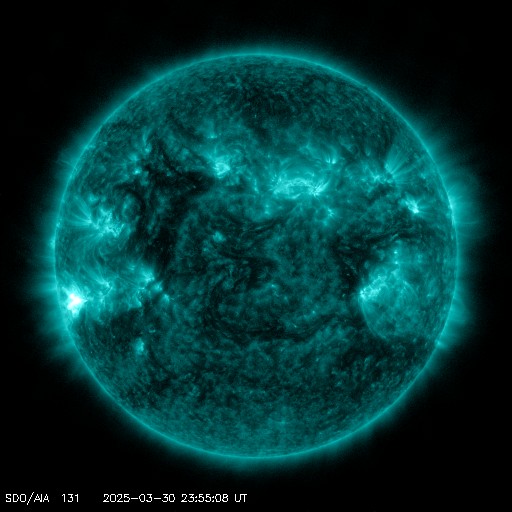Viewing archive of Tuesday, 18 September 2001
Geophysical report
Any mentioned solar flare in this report has a scaling factor applied by the Space Weather Prediction Center (SWPC). Because of the SWPC scaling factor, solar flares are reported as 42% smaller than for the science quality data. The scaling factor has been removed from our archived solar flare data to reflect the true physical units.
Solar and Geophysical Activity Summary 2001 Sep 18 0245 UTCPrepared by the NOAA © SWPC and processed by SpaceWeatherLive.com
Joint USAF/NOAA Solar and Geophysical Activity Summary
SGAS Number 261 Issued at 0245Z on 18 Sep 2001 This report is compiled from data received at SWO on 17 SepA. Energetic Events
Begin Max End Rgn Loc Xray Op 245MHz 10cm Sweep 0146 0146 0147 150 0818 0825 0834 9616 S14E04 M1.5 2n 910 460 II 1514 1516 1519 9616 S14E02 Sf 110 1544 1550 1554 9608 S32W73 M8.1 1n 380 1800 1800 1800 150 1938 1942 1946 C3.3 370 2101 2108 2111 9616 S11W06 M1.0 1n 1200 110 II 2132 2146 2155 9608 S31W73 M1.0 2n
B. Proton Events
None.
C. Geomagnetic Activity Summary
The geomagnetic field has been
quiet to unsettled.
D. Stratwarm
None.
E. Daily Indices: (real-time preliminary/estimated values)
10 cm 199 SSN 159 Afr/Ap 012/010 X-ray Background C2.0 Daily Proton Fluence (flux accumulation over 24 hrs) GT 1 MeV 1.8e+05 GT 10 MeV 1.4e+04 p/(cm2-ster-day) (GOES-8 satellite synchronous orbit W75 degrees) Daily Electron Fluence GT 2 MeV 4.00e+06 e/(cm2-ster-day) (GOES-8 satellite synchronous orbit W75 degrees) 3 Hour K-indices Boulder 1 2 3 3 3 3 3 3 Planetary 1 2 3 3 3 3 3 3
F. Comments
None.
All times in UTC
Current data suggests there is a slight possibility for aurora to appear at the following high latitude regions in the near future
NorilskLatest news
Latest forum messages
More topicsSupport SpaceWeatherLive.com!
A lot of people come to SpaceWeatherLive to follow the Sun's activity or if there is aurora to be seen, but with more traffic comes higher server costs. Consider a donation if you enjoy SpaceWeatherLive so we can keep the website online!

Latest alerts
11:15 UTC - Solar protons
Minor S1 Solar Radiation Storm - Minor impacts on HF radio through polar regions
10:45 UTC - Solar flare
Moderate M1.26 flare
10:27 UTC - Radio Blackout
Minor R1 radio blackout in progress (≥M1 - current: M1.22)
00:09 UTC - Solar flare
Moderate M1.03 flare
Sunday, 30 March 2025
23:51 UTC - Radio Blackout
Minor R1 radio blackout in progress (≥M1 - current: M1.03)
Space weather facts
| Last X-flare | 2025/03/28 | X1.1 |
| Last M-flare | 2025/03/31 | M1.2 |
| Last geomagnetic storm | 2025/03/27 | Kp5 (G1) |
| Spotless days | |
|---|---|
| Last spotless day | 2022/06/08 |
| Monthly mean Sunspot Number | |
|---|---|
| February 2025 | 154.6 +17.6 |
| March 2025 | 127 -27.6 |
| Last 30 days | 127 -25.7 |




